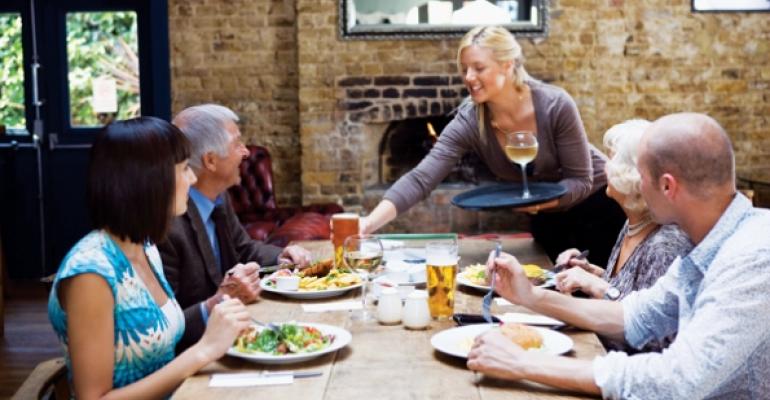Casual dining, once the hottest sector of the restaurant industry, is anything but today. Recent headlines have covered everything from activist investors getting involved in order to rejuvenate a brand and jump-start performance of the stock, to management shakeups and bankruptcies. Consider the following, which have taken place in just the last few months:
1. Activists have become involved with Darden Restaurants Inc. and BJ’s Restaurants Inc.;
2. Significant management changes have occurred at Applebee’s Neighborhood Grill & Bar, Brinker International Inc., Famous Dave’s of America Inc. and Romano’s Macaroni Grill;
3. F&H Acquisition Corp., parent to Fox & Hound and Champps, and Fired Up Inc., parent to Johnny Carino’s, declared bankruptcy.
In addition, menu changes have been or are being implemented at Ruby Tuesday, Olive Garden and Carrabba’s Italian Grill, among others. Three of the segment’s pioneering brands, Bennigan’s, TGI Fridays and Ruby Tuesday, either have been or are in a state of flux. Bennigan’s went through bankruptcy, TGI Fridays is being sold, and Ruby Tuesday is experiencing significant sales weakness.
RELATED
More from Steve Rockwell
• Private equity filling restaurant finance gap
• Financial trends: A seller's market
• More opinions
NEWS FROM NRN
• Zoe’s Kitchen plans expansion after successful IPO
• Ruby Tuesday looks to lift same-store sales
• More Finance news
To be sure, there are still a number of casual-dining brands that are performing well, but this backdrop is a far cry from the late ’80s and early ’90s, when same-store sales were increasing at a mid- to high-single-digit rate, and IPOs were plentiful and performing well. Strong consumer demand pulled most operators in the segment up, at least for a while.
It is clear that the segment has been laboring for some time. Are the recent developments reflective of a culmination of the pressures on the segment, or are they simply coincidences relating to company-specific issues? What, if any, insights can be drawn and applied to the current hot segment, fast casual?
While each situation is different and, to be sure, there are company-specific issues affecting each one, the conditions of the segment have had a significant impact on these developments. Competitive pressures, changing consumer needs and demands, and brands that have not kept pace with those changes have contributed to the problems.
The golden years of casual dining were the result of demand from the baby boomer generation reflecting increased disposable income and the rise in two-income families. This set of consumers grew up frequenting quick-service chains. As they matured, they wanted more service and the option to have alcohol. They wanted a place with higher-quality food and that provided a form of entertainment and an opportunity to socialize. After having children, the kid-friendly nature of casual-dining restaurants remained an attraction for the baby boomer generation.

Do you think fast-casual brands can learn anything from casual dining? Join the conversation in the comments below.
As boomers aged, their needs further evolved and bifurcated. They still wanted a place for entertainment, although the quality and health aspects of the food options became even more important. So-called polished causal fit this desire. With ever-increasing time pressures and a lifestyle of eating out, a quick, more utilitarian alternative also was necessary. This option still needed to offer high-quality, healthful choices, even if they were a little more expensive than traditional quick service. Fast casual was born.
The baby boomers’ children, Generation Xers were raised on casual dining. As they set out on their own, they wanted to establish their own habits, were even more time-pressed than their parents, and were very much into having things their own way. Fast casual fulfilled those requirements. This generation also largely eschewed casual dining because it was their parents’ segment and too familiar to them. For their entertainment and social options, they were willing to pay a little more, so polished casual had an appeal.
Thus, casual dining is no longer in the mainstream for either generation.
What can investors in and operators of fast-casual brands take away from the trials of casual dining? Most important is to understand the consumer and why he or she is frequenting a particular brand. Anticipate and plan for changes in what the customer is looking for and how the restaurant will be utilized. Build a brand and a physical environment that is not too heavily themed and can evolve with a relatively small investment. This takes discipline, a characteristic that must be extended to all aspects of the company – from operations to real estate to finance.
Investors are looking for the next Panera Bread or Chipotle Mexican Grill, and entrepreneurs are feverishly developing new concepts with the same objective. There are likely to be some highly successful companies that emerge from this activity, but there are also likely to be some very visible disappointments.
Having discipline and focus on operations and financial metrics such as return on investment will produce success over the near and intermediate terms. Over the very long term, however, the most successful companies will be those that clearly understand who their consumer is, and why and how he or she uses the brand – and that have the ability to adapt to changes in their customers’ needs and habits.

